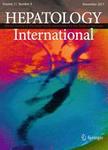版权所有:内蒙古大学图书馆 技术提供:维普资讯• 智图
内蒙古自治区呼和浩特市赛罕区大学西街235号 邮编: 010021

作者机构:Inst Liver & Biliary Sci Dept Pathol D1 Vasant Kunj New Delhi 110070 India Inst Liver & Biliary Sci Dept Mol & Cellular Med D1 Vasant Kunj New Delhi India Krishna Mohan Med Coll & Res Ctr Mathura India Inst Liver & Biliary Sci Dept Hepatol D1 Vasant Kunj New Delhi India
出 版 物:《HEPATOLOGY INTERNATIONAL》 (Hepatol. Int.)
年 卷 期:2025年第19卷第3期
页 面:633-646页
核心收录:
学科分类:1002[医学-临床医学] 100201[医学-内科学(含:心血管病、血液病、呼吸系病、消化系病、内分泌与代谢病、肾病、风湿病、传染病)] 10[医学]
主 题:DILI Chronic DILI Biochemical non-resolution DILI BMI Autoantibody Canalicular transporters Liver pathology Ductular bile plugs Duct damage Multivariate linear regression model
摘 要:Introduction Chronicity in drug-induced liver injury (DILI) is assessed at 12 months, leading to a large time gap from its initial presentation. In this study, we developed a model that could predict biochemical non-resolution in DILI (DILI-NR) patients at 6 months using baseline clinicopathological data. Patients and methods Cases of DILI with liver biopsies were enrolled between January 2016 and December 2021. BSEP, MDR3, and MRP2 were assessed immunohistochemically. DILI-NR was considered a biochemical non-resolution 6 months after the onset of DILI. A separate cohort of 126 patients was taken as a validation cohort. Results DILI-NR was noted in 59/407 patients (14.5%). DILI-NR patients had significantly higher body mass index, lower hemoglobin, more severe disease at the presentation, autoantibody positivity, higher IgG, association with co-morbidities, and were more aged. Pathologically, DILI-NR had increased ductular reaction, duct damage, duct loss, ductular bile plugs, and autoimmune hepatitis-like morphology along with lesser expression of canalicular transporters. On multivariate logistic regression (LR) analysis and XGBoost analysis, BMI, hemoglobin, presence of autoantibodies, disease severity at baseline, and lower expression of any one transporter were associated with DILI-NR (AUROC = 0.92). After calibrating the model on the test cohort, the LR model showed AUROC of 0.89 with an accuracy of 87.3% and precision of 91.5%, confirming the effectiveness of the model. Conclusion The model encompassing hemoglobin, BMI, presence of autoantibodies, disease severity, and reduced expression of canalicular proteins at baseline predicts the biochemical non-resolution of DILI at six months.